Lighting really can make or break how your home looks. After years of working with so many homes, I’ve noticed that great lighting can elevate a space, but bad lighting choices—even in expensive homes—just cheapen the vibe instantly.
Remember to repin your favorite images!
A lot of folks obsess over furniture and paint colors but forget how crucial lighting is for creating an inviting atmosphere.
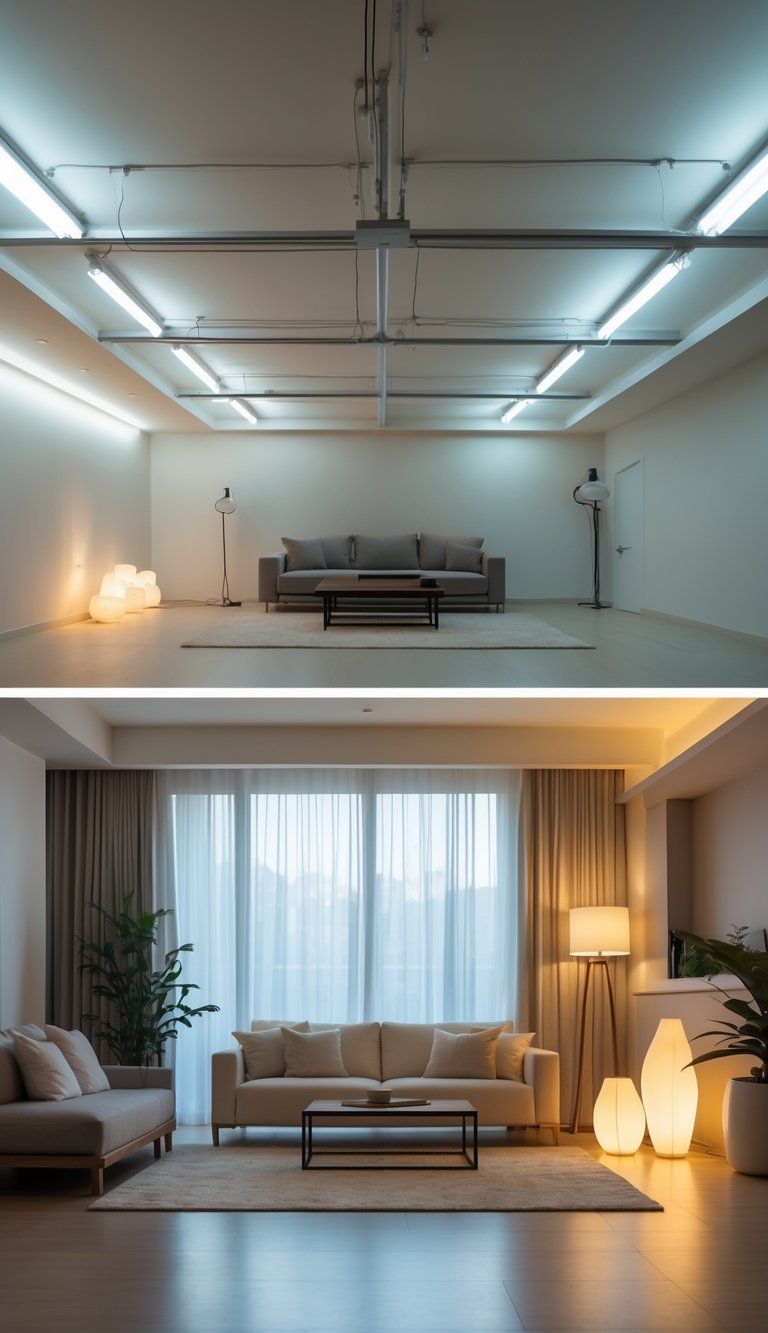
Poor lighting—like old fixtures, wrong sizes, or just relying on overhead lights—can instantly make your home look cheap, no matter what you spent on everything else. Those dated brass chandeliers or builder-grade dome lights? They give off harsh, unflattering light and make rooms feel cold.
But here’s the upside: lighting mistakes are usually easy and surprisingly affordable to fix. Just adding more light sources at different heights, swapping out old fixtures, or putting in dimmers can transform your space from blah to beautiful.
These tweaks pay off big time and often give you the best bang for your buck when you want to upgrade your home’s look.
Common Lighting Mistakes That Lower Home Appeal
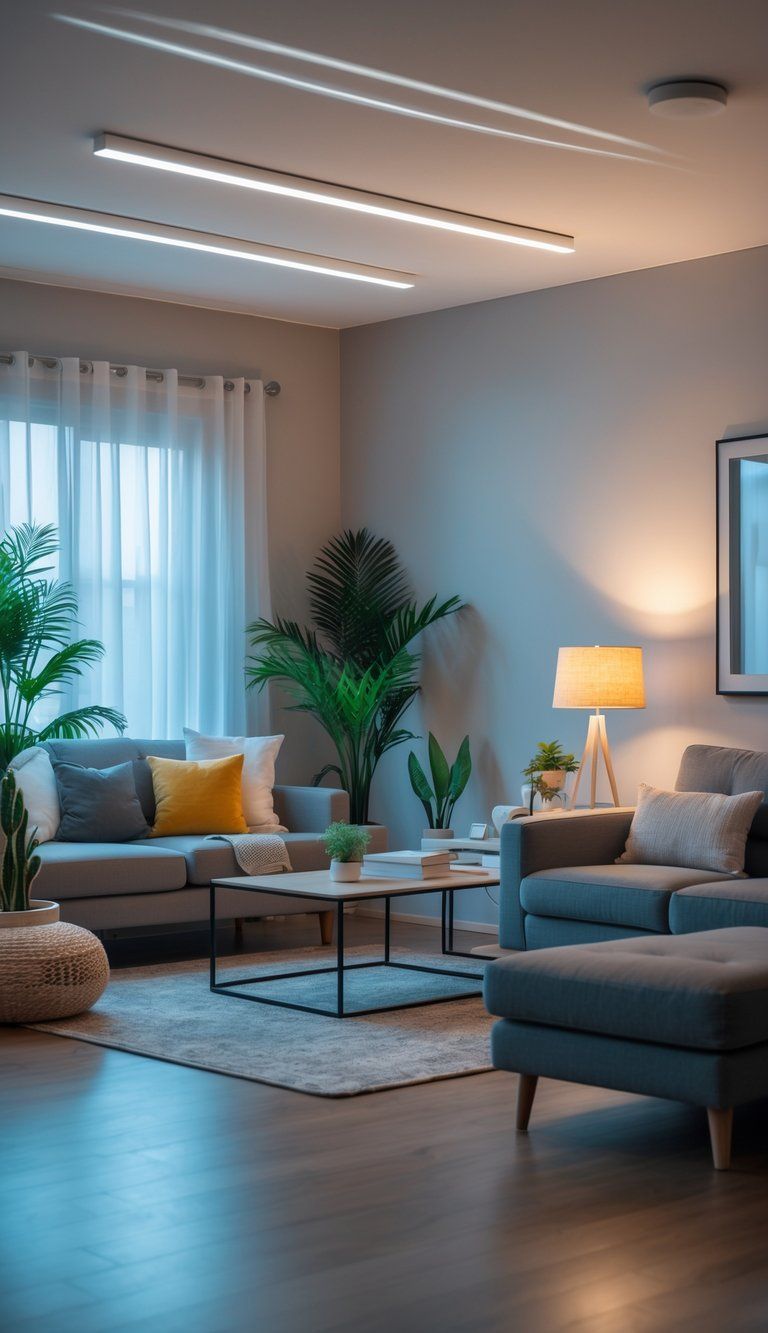
Lighting shapes how your home looks and feels. Even a well-styled room can look cheap or outdated if the lighting isn’t right.
Overreliance on Overhead Lighting
A lot of people rely almost entirely on ceiling fixtures. That creates harsh shadows and gives rooms a flat, almost institutional feel.
Overhead lighting alone tends to spotlight every flaw and makes spaces seem smaller. It can also strain your eyes when you’re reading or watching TV at night.
Try adding floor lamps, table lamps, or wall sconces to balance things out. You’ll get a much warmer, more inviting vibe. Dimmers on overhead lights help too, so you can adjust brightness for whatever you’re doing.
Insufficient Layered Lighting
A good room needs several light sources at different heights and strengths. If you skip layering, your space will look flat and kind of lifeless.
Great lighting design always includes three layers: ambient (the main light), task (for work or reading), and accent (to highlight cool stuff). If you miss one, the room just feels off.
Start with ambient light—think ceiling fixtures or recessed lights. Add task lighting like desk or reading lamps, or under-cabinet lights. Then toss in accent lights—maybe sconces or picture lights—to spotlight art or architectural details.
Each room has its own needs, so don’t be afraid to experiment.
Using Outdated or Cheap Fixtures
Old light fixtures date a space fast. Those 1980s brass chandeliers or frosted dome lights? They instantly cheapen your home.
Cheap fixtures often use flimsy materials that tarnish or yellow. They don’t spread light well, which can leave some spots too harsh and others too dim.
Upgrade to quality fixtures that fit your home’s style. You don’t have to spend a fortune—there are plenty of affordable, stylish options out there.
When you pick new fixtures, think about size. A tiny chandelier in a big dining room looks odd, and huge fixtures can overwhelm small spaces.
Improper Placement of Light Sources
Even the prettiest fixtures don’t help if you put them in the wrong spot. People often hang pendants too high or low, or set lamps at weird heights.
Poor placement leads to annoying shadows, glare on screens, or just not enough light where you need it. That’s a recipe for frustration and tired eyes.
Hang dining pendants about 30-36 inches above the table. Bedside lamps should have the bottom of the shade at eye level when you’re sitting down.
Always ask yourself what you’ll be doing in the space. Kitchen counters need direct light for cooking, while living rooms need lights that chase away shadows and make it easy to relax.
How Poor Lighting Affects Mood and Perception
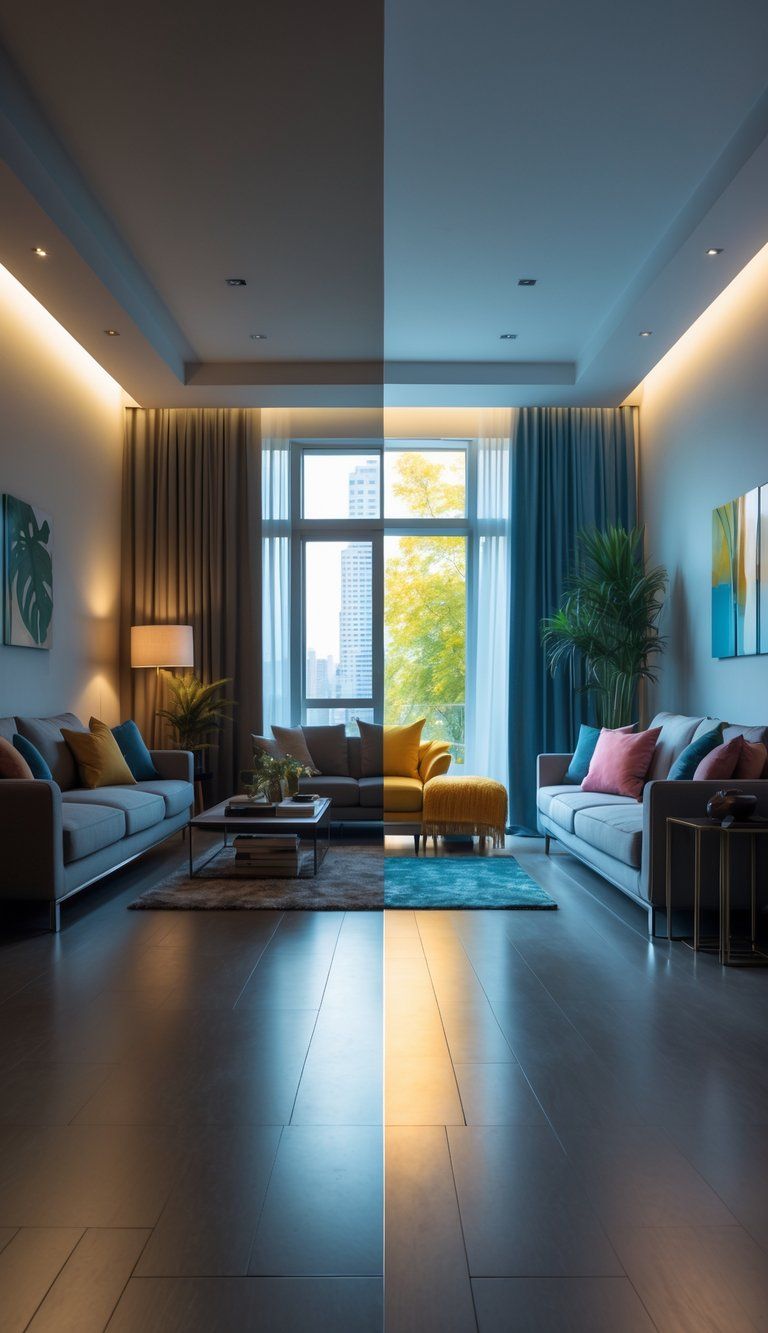
Lighting isn’t just about seeing—it totally changes how you feel in your home and how others see it too. Good lighting brings warmth and shows off your décor. Bad lighting drains a room of personality and makes it less functional.
Negative Impact on Ambiance and Warmth
Bad lighting can ruin the mood instantly. Studies say lighting affects how we feel. Harsh overhead lights can turn a cozy living room into a cold office.
Too-bright lights make people tense and uncomfortable. They throw weird shadows and can even give you headaches after a while.
Dim lighting does the opposite—it makes rooms feel gloomy or even depressing. That’s not just about your mood; it changes how you connect with people at home.
Color temperature matters, too. Cool, bluish lights make spaces feel sterile. That’s not the homey feeling most of us want, right?
Illumination and Functionality Issues
Bad lighting makes daily life harder. Cooking in a kitchen with no task lighting can be risky. Trying to read in a dark nook strains your eyes.
Uneven lighting creates dead spots where you can’t really do anything. Those dark corners just go unused, which is a waste.
Bad lighting also hides your best design work. Artwork and statement furniture get lost in shadows or harsh glare.
Here’s what else suffers:
- Task performance: You get less done when lighting is bad
- Safety: More accidents happen if you can’t see well
- Space usage: Dark areas become dead space
Even expensive décor looks cheap if the lighting’s off. Good light shows off colors, textures, and materials that make your home unique.
Key Lighting Elements That Elevate Your Space
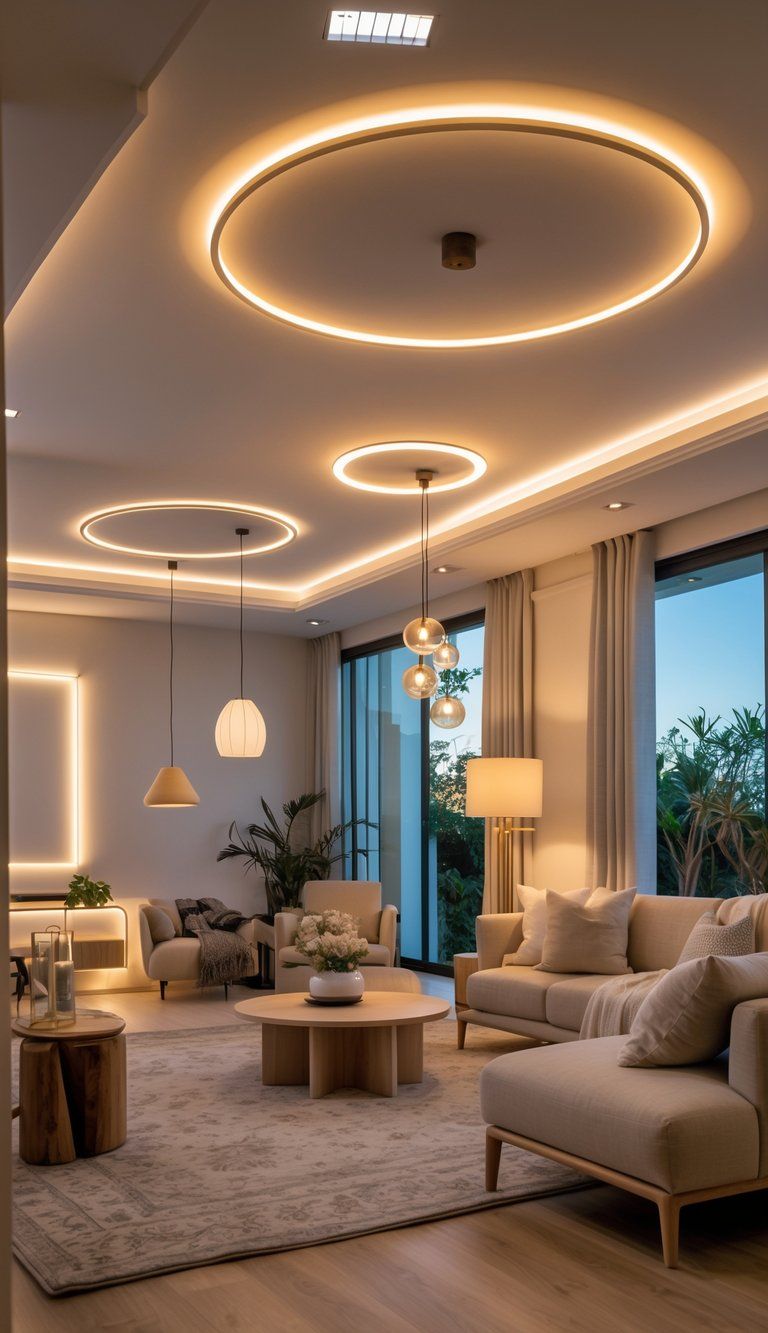
Good lighting can take your home from bland to beautiful. It highlights the best features and creates that warm, welcoming vibe everyone notices.
Importance of Layering Different Types of Lighting
Layered lighting means you use ambient, task, and accent lighting. Ambient is your base—think ceiling lights that light up the whole room. Without layers, rooms feel flat and cold.
Task lighting helps you see for specific things—reading, cooking, putting on makeup. Lamps, under-cabinet lights, and vanity lights are all good options.
Accent lighting brings drama. It highlights artwork or cool architectural bits. Try:
- Wall sconces in hallways
- Picture lights for your art
- LED strips under shelves
- Table lamps in dark corners
A smart lighting plan uses all three and lets you tweak the mood for any occasion.
Choosing Quality Fixtures and Materials
Quality fixtures upgrade a space instantly. Cheap lights feel flimsy, look uneven, and throw light in all the wrong ways. Go for solid materials like brass, bronze, or steel if you can.
Look for fixtures with some heft and no obvious plastic. Good glass diffusers help spread light and cut down on glare.
When shopping, check for:
- Even metal finishes
- Sturdy build
- UL certification
- A decent warranty (longer is usually better)
Think of fixtures like jewelry for your house. Even one standout piece—like a dining chandelier—can lift the whole room.
Strategic Use of Accent Lighting
Accent lights add depth and make your space interesting. Without them, even the nicest rooms can feel flat.
Use accent lights to create focal points and draw attention to your favorite features.
Try adjustable recessed lights for artwork or architectural details. Small uplights can make plain walls dramatic with cool shadows.
For the best results:
- Mix up the heights
- Vary brightness
- Use dimmers for flexibility
- Pick color temps that fit the mood (warm for cozy, cool for work)
Accent lighting can make small rooms feel bigger and ordinary spaces feel custom. Even simple picture lights or portable spotlights can make a huge difference.
Common Fixture Errors and How to Fix Them
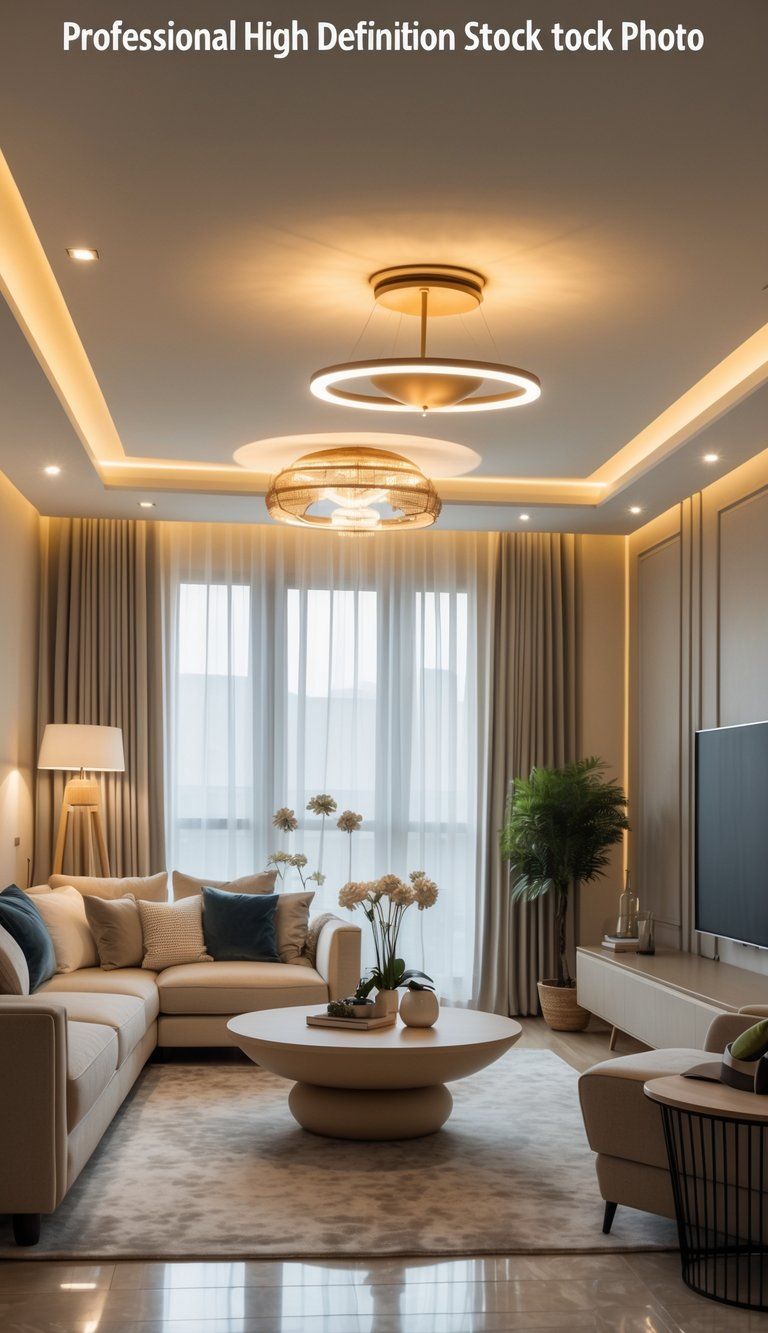
How you choose and place fixtures really changes your home’s vibe. A lot of people accidentally pick fixtures that clash or don’t do their space any favors.
Overusing Recessed Lights or Ceiling Lights
If you only use recessed or ceiling lights, you’ll end up with flat, harsh lighting that’s more office than home.
The fix: Mix it up with:
- Ambient lighting for overall brightness
- Task lighting for activities
- Accent lighting to highlight features
Wall sconces at eye level add warmth, and table or floor lamps create cozy spots. This combo gives your space depth and interest.
Try placing recessed lights around the room’s edges instead of a boring grid. That helps avoid the dreaded “swiss cheese ceiling” look.
Improperly Sized Chandeliers and Pendant Lights
A tiny chandelier in a big dining room or a huge pendant over a small nook just looks wrong.
Sizing tips:
- For dining tables: Pick a fixture 1/2 to 2/3 as wide as your table
- For rooms: Add length and width in feet, then use that number in inches for fixture diameter
- For height: Leave 30-36 inches between table and light bottom
Odd numbers of pendants (like 3 or 5) look best over islands. Space them 24-30 inches apart for balance.
Mismatched or Clashing Lamp Styles
Random lamps with clashing styles make a room look messy. You don’t need everything to match, but some cohesion helps.
For a polished look:
- Stick to similar finishes (all brass, all black, etc.)
- Use the same shade shape (all drum, all empire)
- Keep lamp heights in the same range (table lamps should be close in size)
Pro tip: Table lamps should have the shade’s bottom at your eye level when you’re sitting. For reading lamps, the bottom of the shade should hit your chin to avoid glare.
Mix lamp types—pair table lamps, floor lamps, and sconces for a layered, curated look.
Enhancing Rooms with Proper Lighting Techniques
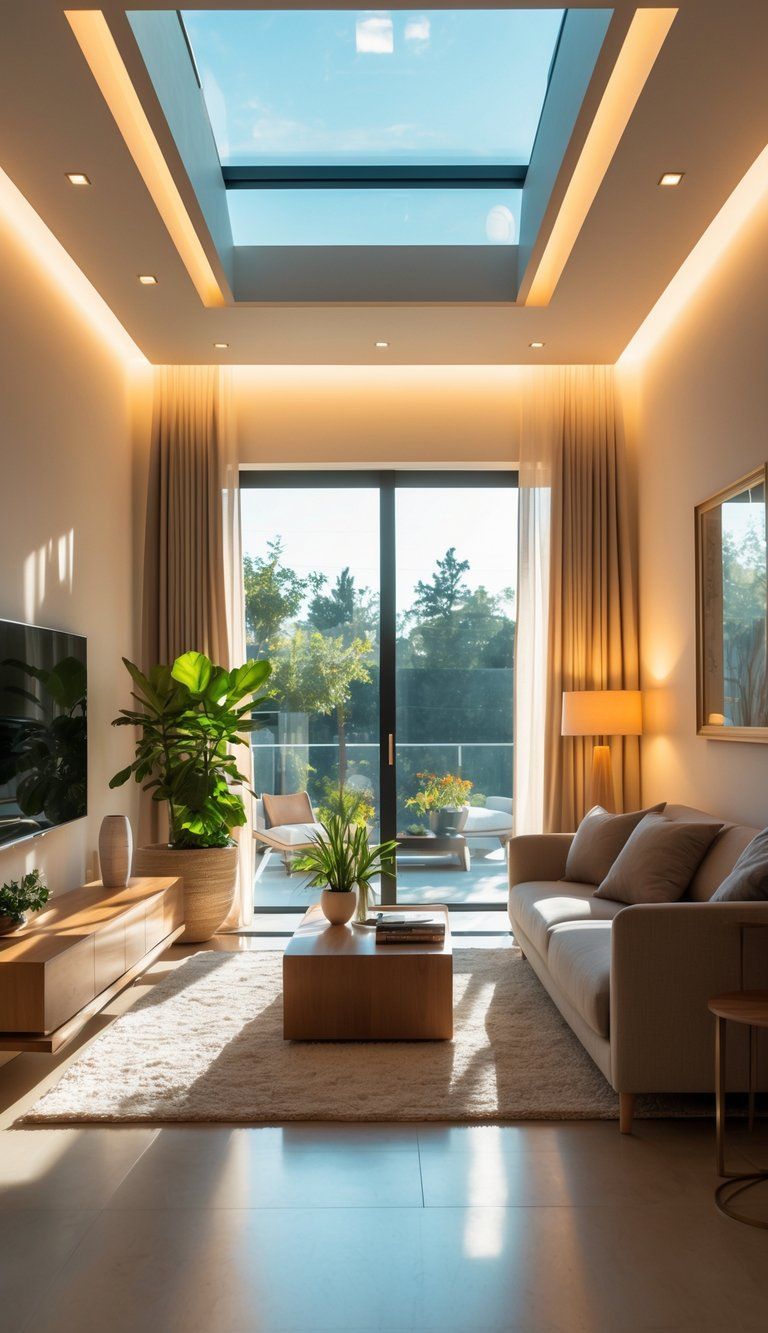
The right lighting can make your home feel extraordinary. Good design uses a mix of sources and types to make every space feel welcoming and useful.
Utilizing Natural Light Effectively
Natural light is free and always makes a home feel bigger and happier. Keep your windows clean and use sheer, light curtains to let in sunshine while still keeping things private.
Mirrors placed across from windows bounce light deeper into rooms. For north-facing spaces that don’t get much sun, try cooler bulbs (4000-5000K) to mimic daylight.
Skylights or solar tubes work wonders for dark halls or inner rooms. If you can’t renovate, daylight-simulating bulbs in key spots help brighten things up.
Don’t block windows with big furniture. Instead, arrange seating to catch natural light for reading or working during the day.
Incorporating Task and Ambient Light Layers
Lighting really shines when you use it in layers. Start with ambient lighting—this is your room’s main source of light, usually from ceiling fixtures, recessed lights, or wall sconces.
Then, add task lighting for activities that need extra focus. Desk lamps in your home office, pendant lights over the kitchen island, or a reading lamp beside your favorite chair all count. Task lights should be bright enough to keep your eyes comfortable, but you’ll want to place them so they don’t cause glare on screens.
Accent lighting? Don’t skip it. Use small, directional lights to highlight art, interesting architecture, or even your favorite plant. These little touches add depth and visual intrigue.
Key lighting ratios to keep in mind:
- Ambient: 60%
- Task: 30%
- Accent: 10%
Install dimmers on every circuit if you can. Adjust the light to fit your mood or the time of day.
Optimizing Lighting for Large Rooms and Specific Areas
Large rooms can feel cold or cavernous without the right lighting strategy. Break up the space by using several light sources instead of just one big fixture.
In living rooms, mix overhead lights with floor lamps near sofas or chairs. Table lamps on side tables help create cozy corners for conversation.
Track lighting comes in handy when you want to highlight different zones or features. You can adjust it as your needs change.
In a home office, put your main light source somewhere it won’t create screen glare or awkward shadows. Add a task lamp for paperwork, plus some ambient light to keep your eyes from getting tired.
Dining areas look best with lighting hung 30-36 inches above the table. Fixtures about one-third the width of your table usually feel balanced and proportional.
Got high ceilings? You’ll need either bigger fixtures or more of them to get enough light where you actually need it.
Addressing Dimness and Glare Issues
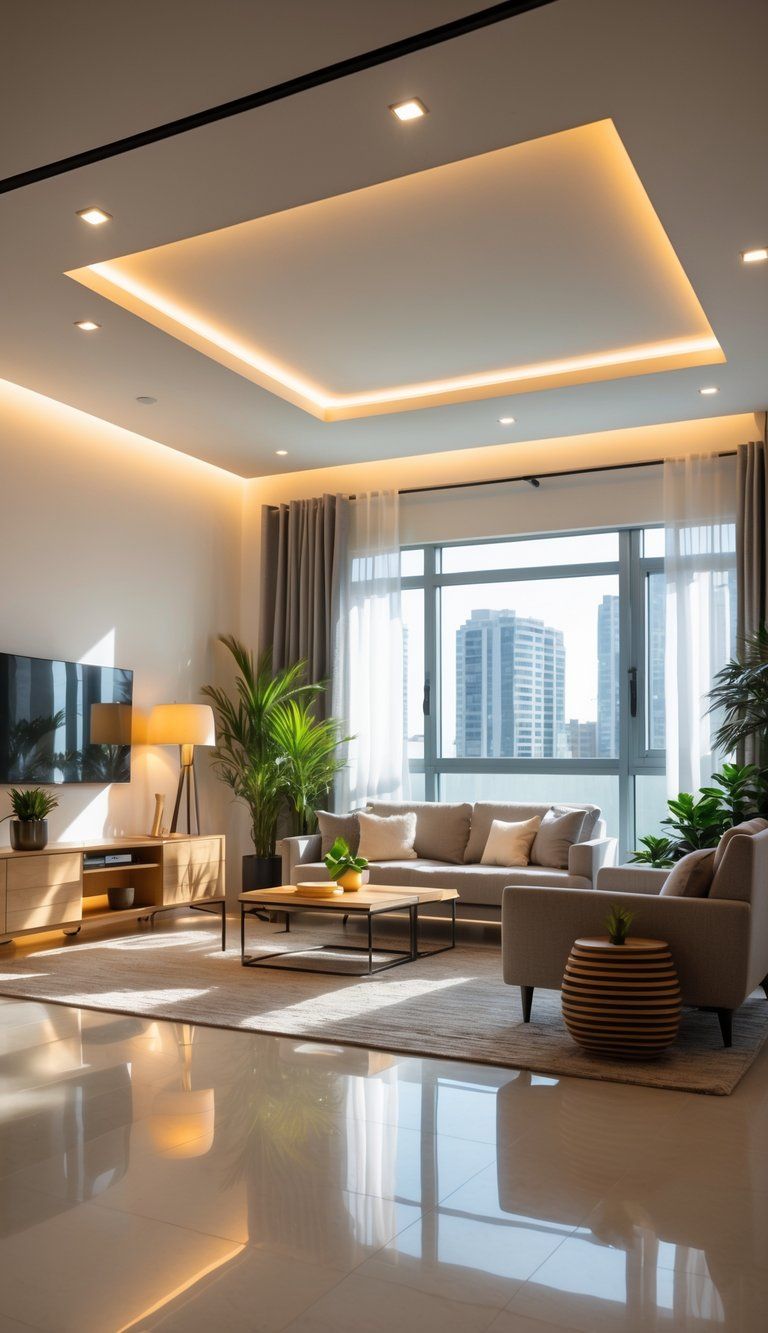
Bad lighting can instantly make your home feel cheap or uninviting. When you fix issues with dimness and glare, the entire space transforms—no renovation needed.
Problems with Incorrect Wattage and Bulb Selection
Picking the wrong bulbs is a surprisingly common mistake. If the bulbs are too dim, the room feels gloomy. Too bright, and it’s harsh and uncomfortable.
Always check what wattage your fixture recommends. Using bulbs that are too weak leaves everything looking shadowy and sad. LED lights solve a lot of problems—they’re bright like higher-wattage incandescent bulbs but use way less energy.
Color temperature is a big deal, too. “Daylight” bulbs (5000-6500K) give off a blue, sometimes chilly vibe. For most living spaces, “soft white” (2700-3000K) bulbs make things feel warm and inviting, kind of like old-school incandescents.
Use “bright white” (3500-4100K) bulbs in kitchens or home offices. They’re clear but not blinding.
Controlling Glare through Placement and Shading
Glare happens when light hits your eyes directly or bounces off shiny surfaces. It’s uncomfortable and, honestly, makes a space look amateur.
Place lights so they don’t shine right in your face. Recessed lights should go where nobody’s going to be staring up at them from a sofa or chair. For reading lamps, keep the shade’s bottom at about shoulder height when you’re seated.
Use shades and diffusers on every fixture. Bare bulbs just create harsh glare and cheapen the look. Frosted bulbs and good quality shades spread the light evenly.
Consider dimmers for overhead lights. They let you tweak the brightness as needed. For TVs and glass tables, angle your lights so you don’t end up with annoying reflections.
Using Dimmers and Smart Controls for Modern Appeal
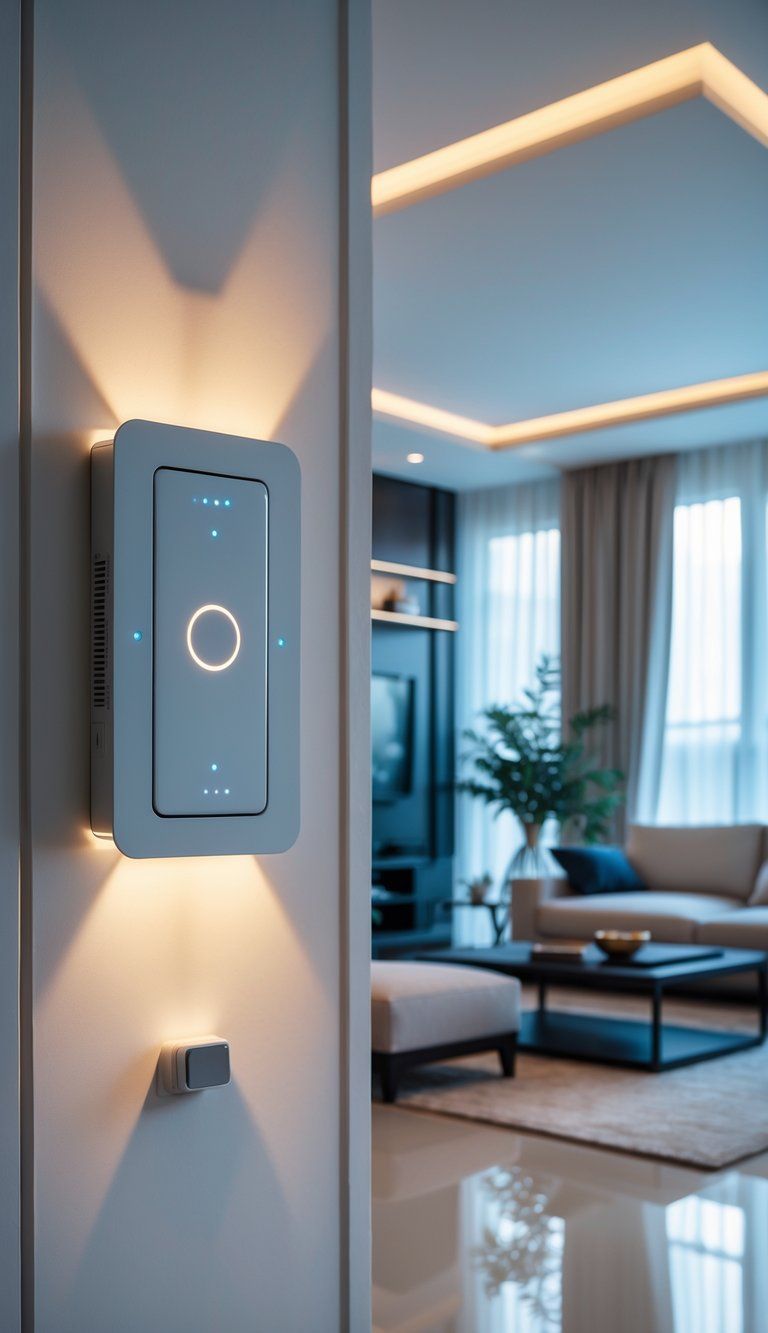
Smart lighting controls add both style and practicality. With them, you control the brightness and mood, turning even basic lighting into a design feature.
Installing Dimmer Switches for Versatility
Dimmer switches are a simple, affordable upgrade. Unlike regular on/off switches, dimmers let you adjust the light for different activities or times of day. It’s a small change that can totally shift the mood of a room.
You can usually swap out your old switches for dimmers without much hassle. Just make sure you:
- Check if your bulbs are dimmer-compatible (especially LEDs)
- Turn off the breaker before you start
- Match the dimmer’s wattage to your fixture
Dimming your lights by 25% can save about 20% in energy and make bulbs last longer. So, dimmers aren’t just a style choice—they’re practical, too.
Adjusting Color Temperature for Different Rooms
Color temperature really changes how a room feels. It’s measured in Kelvins (K), ranging from warm yellow (2700K) to cool blue-white (5000K+). Smart bulbs let you adjust this whenever you want.
Here’s a quick cheat sheet:
| Room | Recommended Temperature | Mood Created |
|---|---|---|
| Bedroom | 2700-3000K (warm) | Relaxing, cozy |
| Kitchen | 3500-4000K (neutral) | Energetic, clear |
| Office | 4000-5000K (cool) | Alert, focused |
With smart controls, you can program these changes to happen automatically. Cooler light in the morning helps you wake up, while warmer light in the evening helps you wind down. It’s a small tweak that can even help you sleep better.
Most smart systems now work with voice assistants or phone apps, so you can adjust things without getting up.
Upgrading Outdoor Lighting to Boost Curb Appeal
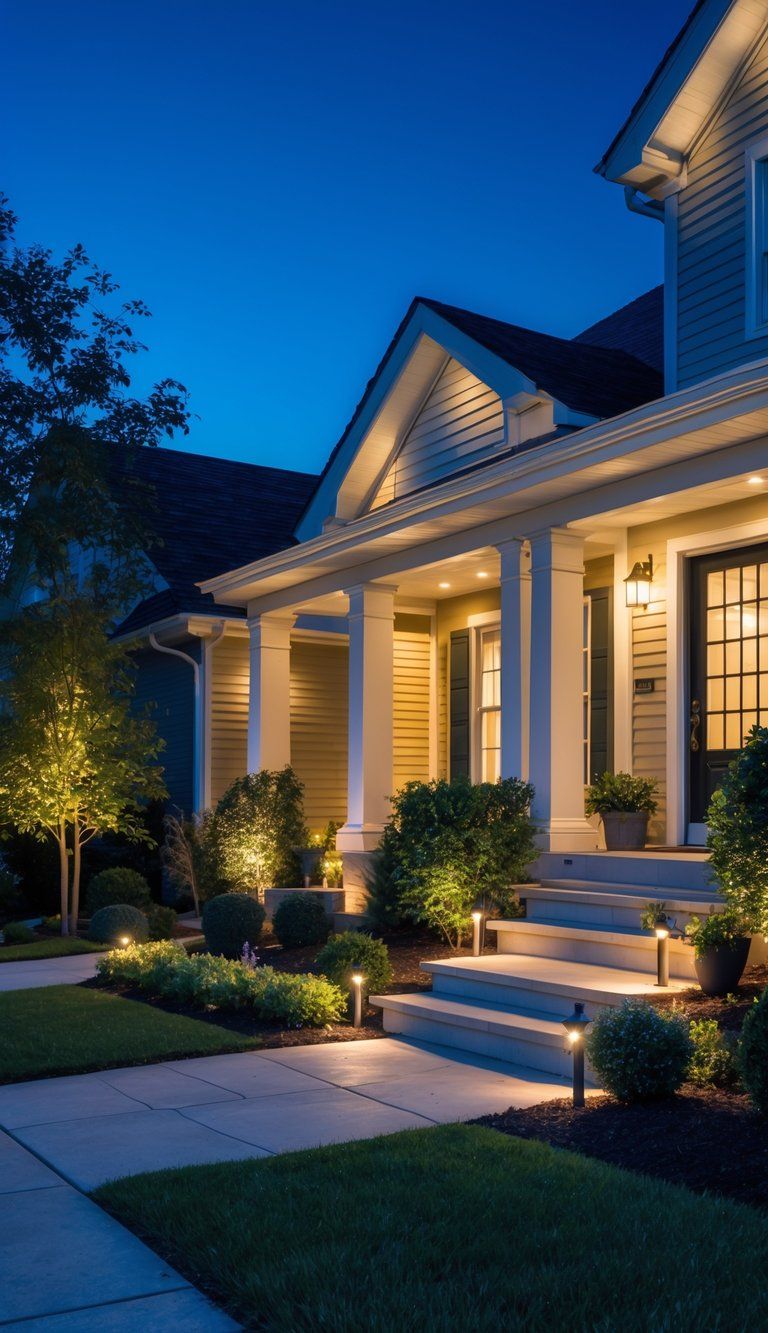
Outdoor lighting can totally change how your home looks from the street. The right setup highlights your home’s best features and adds both security and function.
Highlighting Architectural Features
Put lights where they’ll show off your home’s unique details. Uplights at the base of columns or cool stonework create dramatic shadows and depth. Wall sconces by the front door add symmetry and a welcoming glow.
Stick with warmer bulbs (2700-3000K) for a cozy look. LED fixtures are great—they save energy and come in the right color temperatures.
Use spotlights for trees or landscaping. With the right placement, you can create beautiful silhouettes against your house. This “moonlighting” technique adds dimension and a bit of magic at night.
Avoiding Under- or Over-Lit Exteriors
Balance is everything outside. Too little light, and your home feels unwelcoming or even unsafe. Too much, and it looks harsh—almost like a parking lot.
Layer your outdoor lighting:
- Ambient lighting: General glow for the whole area
- Task lighting: Focus on paths, steps, or entrances
- Accent lighting: Highlight features or landscaping
Don’t put lights at eye level where they cause glare. Aim them up or down, away from where people look.
Timers or smart controls help you keep lights on only when needed. This saves energy and keeps your home looking good at all hours.
Avoiding Clutter and Maintaining a Cohesive Look
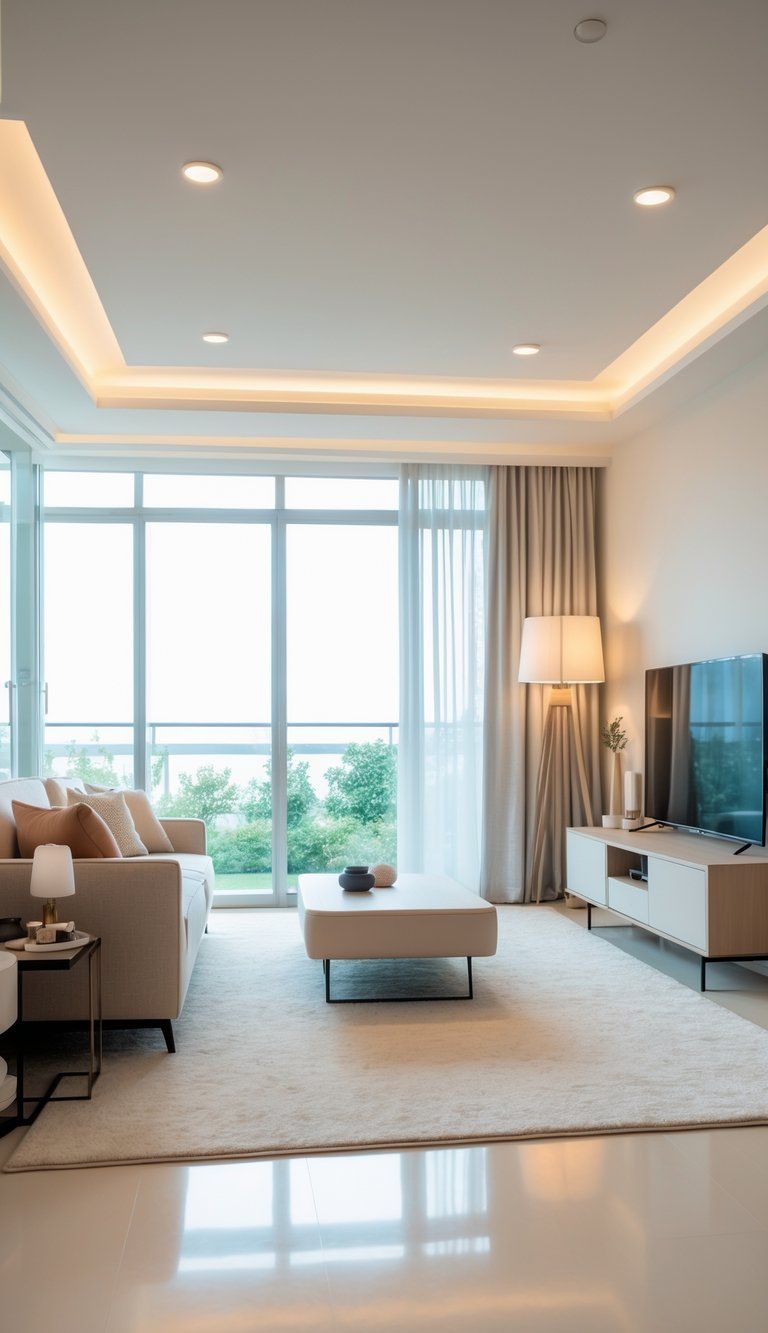
A cluttered lighting setup can make even a fancy home feel chaotic. Balance and coordination matter for a space that feels polished and inviting.
Balancing Light Fixtures with Interior Design
Too many fixtures in a room just create visual noise. In small rooms, stick to two or three lights that each do something different. Maybe a ceiling light, a floor lamp, and a reading lamp.
Size matters a lot. Oversized lights in tiny rooms look awkward. Tiny pendants in huge rooms come off as cheap and underwhelming. Here’s a trick: add your room’s length and width (in feet), then use that number (in inches) for your fixture’s diameter.
Don’t let corners or areas go dark. Plan your lighting so every part of the room feels balanced and usable.
Think in terms of three types:
- Ambient lighting: The main light source
- Task lighting: For things like reading or working
- Accent lighting: To call attention to art or architecture
Coordinating Styles Across Your Home
Mixing too many different lighting styles can make your home feel scattered. Fixtures don’t have to match exactly, but they should share some common thread—maybe the finish, shape, or design era.
Choose lights from the same collection or with finishes that play well together. Brushed nickel looks good with chrome; oil-rubbed bronze pairs nicely with black metal.
Consider your home’s architectural style, too. Modern fixtures in a traditional space can feel out of place. Pick lighting that fits your home’s era but still reflects your taste.
Keep your bulb color temperatures consistent. If you mix cool and warm bulbs, the space just feels off. Stick to one color temperature (in Kelvins) for connected rooms.
Conclusion: Transform Your Home with Effective Lighting Solutions
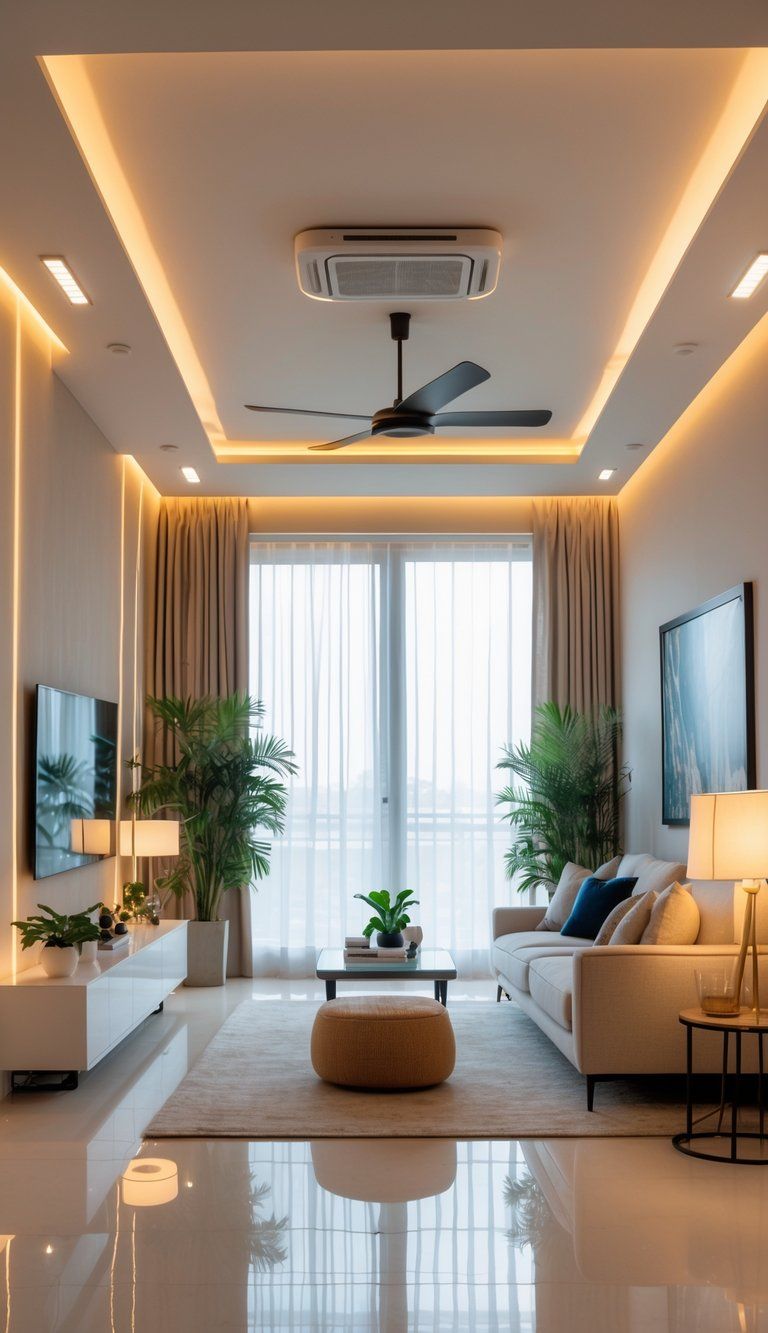
Good lighting does more than just brighten a room—it sets the mood and makes your home work for you. When you fix a few common mistakes, you can totally change the vibe of your space without tearing down walls.
Layering really matters. Try mixing ambient, task, and accent lighting so each room has a bit of depth and some personality.
Think about the temperature of your lights. Warm bulbs (2700-3000K) make spaces feel cozy, while cooler ones (3500-4100K) help you focus in places like the kitchen or bathroom.
Natural light? Don’t ignore it. I like to use mirrors to bounce sunlight around, which instantly makes rooms feel larger and more open.
You might want to install dimmer switches. They give you control, letting you tweak the brightness for any time of day or whatever you’re up to.
Swapping out old fixtures for something modern can make a surprising difference. It’s a quick change, but it really lifts the whole look of your place.
Make sure your fixtures fit the space. A properly sized chandelier or pendant keeps a room from feeling awkward or off-balance.
And honestly, smart lighting is pretty cool. You can set up lighting scenes for movie night or dinner parties—all from your phone.
If you put some thought into your lighting choices, your home will look more stylish and feel way more comfortable.

